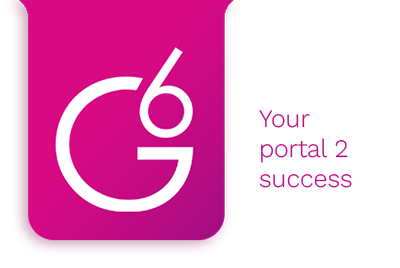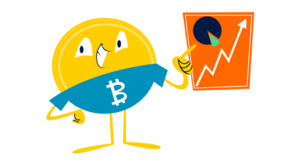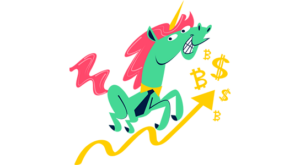Does your company struggle to attract marketing qualified leads? Do you know which channels are most effective in attracting your target buyer?
If these questions created a knot in your stomach, don’t worry!
Hi! My name is AJ. I recently sold my company for multiple seven figures. Today, I answer entrepreneurs’ burning questions through Small Business Bonfire (SBB).
One area I always get questions about is marketing! After discovering the different marketing funnel stages, my business flourished!
If you want to learn how to do the same, keep reading! I’m sharing my most well-kept secrets about marketing.
Key Takeaways
A marketing funnel outlines the steps prospects take to purchase your products or services.
Marketing funnels can help companies better understand their client base.
The stages of the marketing funnel include awareness, consideration, conversion, and loyalty.
Marketing AND sales teams must understand the company’s marketing funnel.
Related Reading: Small Business CRM
SBB Featured Partners
Before I can show you how to use a marketing funnel, you must understand it!
Marketing funnels outline customers’ most straightforward journey to purchase your products or services.
This visual framework is a critical element of any marketing strategy!
Why? You might ask.
Well, a marketing funnel connects and engages with customers along their buying journey.
When companies go out of their way to form deep, meaningful connections with customers, they increase the chances of the following things:
Loyal customers Positive word-of-mouth marketing Higher value purchases Collecting informative data
Of course, every customer’s journey is more complex than a marketing funnel displays (and that’s okay).
Marketing funnels account for customers entering, leaving, and even moving around the funnel.
Still, this tool lays out each stage, indicating how and when is the best time to reach out to these prospects.
These funnels are also crucial for the following things:
Lead generation Lead nurturing
As companies generate leads, they utilize specific campaigns to attract new leads.
Similarly, when businesses acquire leads and need to nurture them, there are specific actions that boost the likelihood of conversion.
A marketing funnel connects the dots, if you will, to these stages and everything in between.
As a result, teams can confidently choose the content and messaging that works best for customers and captures their attention.
These marketing strategies and data ultimately lead to higher conversion rates and meaningful customer relationships!
The following section will cover the various advantages of implementing a marketing funnel!
Is it really that important to understand how a marketing funnel works? Why does your company need this tool?
Trust me, I understand the hesitation of trying something new, especially if your marketing campaigns are successful.
However, you MUST consider the advantages of marketing funnels! These benefits include the following things:
They encourage meaningful, organic growth They help teams understand their target audience They enable teams to master their customer journey/sales cycle
Let’s look at these three benefits in closer detail!
Marketing funnels help encourage meaningful growth by providing a clear, structured path that prospective customers follow from discovering to purchasing your products or services.
This structured approach allows businesses to do the following things:
Identify key touchpointsOptimize engagement strategiesFoster a more robust conversion strategy
Also, funnels help to eliminate wasted marketing efforts!
There’s nothing more frustrating than wasting your company’s precious time, energy, and money!
Fortunately, a marketing funnel focuses energy and resources on strategies guiding customers through the sales process.
By understanding the stages in the customer journey, businesses can create more effective, targeted marketing campaigns, leading to increased conversions and meaningful business growth.
Why is driving meaningful growth crucial for companies?
Simple.
In a competitive business environment, achieving sustainable growth is paramount.
By implementing a marketing funnel, businesses can ensure that their marketing efforts are not just fueling short-term sales but are also contributing to long-term growth by:
Attracting new customersRetaining existing onesBuilding a loyal customer base
These aspects are critical to a business’s success and longevity, making the funnel an indispensable tool for meaningful growth!
Understanding customers and their needs is fundamental to the success of any business, and that’s where a marketing funnel can be invaluable.
A marketing funnel provides insights into your current and potential customers, helping businesses understand how customers interact with their brands.
This understanding can reveal customers’ motivations, concerns, and decision-making processes at each stage of the buying process.
Knowing what your customers like and dislike is invaluable for several reasons.
First, this knowledge allows businesses to tailor their marketing tactics to meet customers’ needs and preferences at each stage.
This targeted approach can significantly improve engagement and conversion rates.
Secondly, understanding the customer journey can help businesses identify potential issues or bottlenecks getting in the way of successful conversions.
Lastly, a comprehensive understanding of customers can inform product development, helping businesses create products or services that better meet the needs of their customers!
Marketing funnels are crucial in helping businesses master their purchase cycle by providing a clear roadmap from a customer’s first contact with the brand to the final purchase decision.
Marketing funnel metrics break down the buying journey into distinct stages, allowing companies to tailor their strategies according to each stage’s specific needs and behaviors!
By doing so, businesses can deliver the right message at the right time.
Also, marketing funnels highlight the pain points in the purchase process, bringing attention to areas that require improvement.
This understanding can lead to more effective campaigns and higher conversion rates, positively impacting the bottom line.
Typically, there are four steps in the marketing funnel, which include:
Awareness Consideration Conversion Loyalty
Understanding these stages helps teams make the best decision to boost sales.
Basically, you ensure your team makes calculated decisions founded on data rather than mere guesses based on a prayer.
Let’s take a look at these marketing funnel stages!
The first marketing funnel stage is awareness.
Brand awareness is a prospect’s familiarity with your company, which can include them recognizing any of the following things:
Knowing the brand name Resonating with the company’s message Recognizing the tone and style of your brand Connecting with the brand’s values and culture
Brand awareness starts with teams attracting customers to your company AND ensuring they remember it.
Basically, you want to ensure potential customers see your social media pages or website and keep it in mind when they’re ready to purchase something.
Some of the ways you can get your brand name in front of potential customers:
Digital advertising Audio ads Social media campaigns Content marketing
Remember, some of these methods work better in some industries than others! So, it’s crucial to know what works best for your company.
The second stage in the marketing funnel is the consideration stage.
At this point, potential customers are aware of your brand and are considering whether your product or service fits their needs.
Here, businesses can nurture leads and build a relationship by doing the following things:
Providing more detailed informationOffering value propositionsAddressing common objections
Some ways to show prospects what your brand offers include the following strategies:
Targeted content Email marketing Personalized offers or discounts
Ultimately, the goal is to move these potential customers closer to the conversion point by making your brand the best choice among all the options they are considering!
The goal of the conversion stage is simple: you want your prospects to officially purchase your products or services!
When a customer reaches the conversion stage, it signifies they resonate with your brand, its message, and the problem it solves.
Many companies don’t realize that the conversion stage is an excellent opportunity to distinguish itself from the competition!
For instance, some things that can help a brand stand out during this stage include:
Creating product pages that offer detailed descriptions of the product or service Explaining the meaning or cause the brand supports as a customer is shopping Providing excellent customer support via a chatbot Ensuring the website is intuitive yet informative
One helpful aspect of the conversion stage is that you can gather a lot of marketing funnel metrics.
For instance, you can track things like ad clicks and conversion rates per ad based on your website’s analytics.
Also, it’s crucial to remember that the customer relationships you develop in the first two stages directly influence whether potential customers convert to paying ones.
The final stage of the marketing funnel is loyalty.
This stage is crucial as it’s all about nurturing your relationship with the customer post-purchase to create repeat customers and brand advocates.
At this stage, you should focus on strategies such as:
Email marketingLoyalty programsCustomer feedback surveys
Basically, any action that creates and maintains a strong relationship with your customers is something you should do!
Also, providing excellent customer service is essential because it significantly contributes to customer loyalty.
Why am I harping on customer loyalty so much?
Loyal customers provide consistent revenue through repeat purchases and are more likely to recommend your brand to others, resulting in new potential customers.
Further, these customers are more forgiving when things go wrong, given their positive past experiences.
A standard model for marketing funnels is the three-stage model.
This model contains the following stages:
Top of the funnel Middle of the funnel Bottom of the funnel
Here’s what you need to know about each of these stages!
The top-of-the-funnel (TOFU), also known as the awareness stage, is where prospective customers first become aware of your brand.
This stage mainly involves attracting and educating potential customers about your company’s existence and what you sell.
Put simply, this is the stage where you aim to catch the attention of potential leads as much as possible, making it essential for your marketing strategy!
Some popular techniques companies use at this starting point include:
Search engine optimization (SEO)Social media campaignsContent marketing
The middle-of-the-funnel (MOFU), also known as the consideration stage, is where potential customers compare your product or service with others in the market.
They clearly understand their problem and are actively looking for solutions.
So, you must aim to position your brand as the best choice during this stage.
How can you ensure your brand is the one potential consumers think of first?
Try these techniques:
WebinarsCase studiesFree trialsProduct demosDetailed product descriptions Interactive social media posts and campaigns
The bottom-of-the-funnel (BOFU) is where prospects decide to purchase your product or service!
The final and most crucial stage in the marketing funnel is where your leads transition into paying customers (yay!).
Providing clear and compelling calls to action is vital to ensuring a smooth checkout process during this stage.
Also, this stage often involves the following things:
Tailored communicationSpecial offersIncentives to stimulate conversion
Like the other stages of the funnel, the conversion funnel offers several pieces of valuable data.
Utilizing this customer data for future business decisions and processes is a MUST to improve and scale continually!
At this point, you’re well-versed in the top, middle, and bottom stages of the funnel.
But what strategies can you implement to ensure these stages work as you’ve envisioned?
That’s why I’m here! Below, I’ve listed various strategies for every marketing funnel stage!
There are several strategies your business can take to make the most of the awareness stage!
Content Marketing
Creating and sharing valuable free content to attract and convert prospects into customers and customers into repeat buyers.
This tactic establishes your brand as an industry expert and provides a helpful resource for consumers, subtly promoting your services.
Also, content marketing might entice a potential buyer to view your company’s website or social media pages to learn more about your products, mission, etc.
SEO (Search Engine Optimization)
Implementing SEO strategies can help your website rank higher in search results, increasing visibility.
SEO includes things like:
Optimizing website contentUsing relevant keywordsEnsuring your website is mobile-friendly
SEO can be challenging for small businesses because several aspects impact this metric.
Fortunately, numerous companies offer SEO assistance, whether you want to do it yourself or hire a third party!
Regardless of your chosen strategy, SEO is a vital consideration for every business with an online presence.
Social Media Marketing
Leverage social media platforms to reach a wider audience (it’s a no-brainer!).
Regular posts, engaging with followers, and utilizing sponsored ads can increase brand recognition significantly!
PR (Public Relations) Campaigns
A well-structured PR campaign can raise brand awareness and create a positive image of your company.
PR could include things like:
Press releasesOrganizing eventsPartnering with influencers
PPC (Pay-Per-Click) Advertising
PPC campaigns can drive traffic to your website, expanding your reach.
My professional tip: use targeted ads on platforms like Google Analytics to draw in potential customers who are already searching for products or services similar to yours.
What can you do during the consideration point in the middle of the funnel?
Here’s my advice!
Email Marketing
Email marketing is a powerful tool during the consideration point.
You can nurture relationships with potential customers by sending personalized and targeted emails.
Email marketing content could include things like:
Educational contentTestimonialsCase studiesDemonstrations that showcase the benefits of your product or service
Live Demonstrations or Webinars
Hosting live demonstrations or webinars allows potential customers to see your product or service in action.
On top of that, it provides a platform for you to answer any questions and address any concerns target customers might have, reducing any purchase barriers!
Interactive Content
Interactive content such as quizzes, calculators, or assessments can engage potential buyers and provide them with personalized results or recommendations!
Interactive content captures their interest and gives you valuable insights into their needs and preferences!
Here are a couple of actions you and your team can take during the conversion funnel stage!
Free Trials
Who doesn’t love a free trial?? There’s zero financial risk on the customer’s end, and you can show off your product!
Offering free trials enables potential buyers to experience your brand’s usefulness and benefits firsthand.
Also, this is an excellent method to eliminate any remaining purchase obstacles and convince consumers to convert!
Discounts and Special Offers
Discounts or special offers on your product or service can motivate consumers to buy something.
On top of that, this strategy can boost customer loyalty and increase sales volume by encouraging larger purchases.
How can you turn your target audience into the most loyal customers on the planet?
Try these two techniques!
Referral Programs
Implementing a referral program not only encourages current customers to spread the word about your brand but also rewards them for their loyalty.
This strategy can enhance customer satisfaction while attracting new leads and increasing your customer base.
Customer Surveys & Feedback
Asking for customer feedback through surveys lets you gain insights into your customer’s experience and satisfaction levels.
Also, understanding their needs and preferences can help you to enhance your services, which, in turn, nurtures customer loyalty.
There are five steps to develop a high-functioning marketing funnel.
Taking each step with care is critical so your funnel functions as intended.
When business owners rush through the developing process, it can result in significant financial and time loss!
Let’s look at these steps closer!
Understanding your target customers is the cornerstone of effective marketing.
By identifying and analyzing their needs, preferences, and behaviors, you can tailor your messaging and offerings to resonate deeply.
This knowledge not only assists in attracting potential buyers but also aids in fostering long-term relationships, ultimately contributing to increased customer loyalty and business growth.
Establishing the Average Order Value (AOV) is vital because it helps you understand how much revenue each order brings in.
AOV can guide your marketing strategies by doing the following things:
Aiding in setting realistic revenue goalsPlanning advertising spendsOffering insights into whether upselling or cross-selling tactics might be effective
Knowing your company’s order timeline is essential because it provides insights into the customer’s purchasing journey, from initial interest to final purchase.
Further, this knowledge allows you to align your marketing strategies with the customer’s decision-making process.
Developing a marketing funnel strategy provides a roadmap for guiding potential buyers through their customer journey, leading them from initial awareness to the final purchase decision.
Also, a well-organized strategy allows businesses to understand and effectively address their audience’s different needs, concerns, and decision-making processes at each funnel stage.
Lastly, a well-structured funnel strategy can aid in the following things:
Predicting customer behaviorOptimizing marketing effortsDriving sales and loyalty in existing customers
Lastly, you MUST measure and adjust your funnel strategy as needed.
Put simply, you want to ensure the tactics you’re using are actually working.
Otherwise, you’re wasting valuable time, money, and energy (no one needs that!).
So, ensure you utilize tools like Google Analytics and website data to measure your marketing funnel performance.
Also, adjusting or pivoting your marketing funnel and strategy a few times is okay before you get it right!
The first time my team and I created a marketing funnel, it failed. However, our mistakes allowed us to find the strategy that worked for us!
Don’t be afraid of failing. Instead, use it as a lesson to improve.
Sure, you can create a traditional marketing funnel, but how do you know it’s successful?
Below, I’ve listed four ways to measure your funnel to ensure you’re doing things right.
Using a customer relationship management (CRM) tool can help you track and analyze all of these metrics!
Cost Per Acquisition (CPA) is a vital metric measuring the total cost of acquiring one paying customer on a marketing channel or campaign.
Put simply, this measure quantifies how much you’re spending on marketing and advertising to convert a lead into a customer!
It’s critical to ensure you don’t spend more money to convert a customer than your revenue per sale.
Customer Lifetime Value (LTV) predicts the total net profit from the entire future relationship with a customer.
Further, this metric provides insights into the financial value of each customer and helps in making decisions about the following things:
Customer acquisitionCustomer retentionSales strategies Funnel marketing
Conversion Rates
Conversion rates are something I’ve mentioned quite a bit (meaning they’re super important!).
These rates are a crucial metric that represents the percentage of visitors that click on your website or ad campaign and take the desired action, such as:
Signing up for a newsletterMaking a purchaseFilling out a form
Conversion rates serve as an indicator of how effective your funnel is.
Therefore, measuring and tracking these rates showcases the success of your efforts in moving a prospective customer from awareness to action!
Conversion Rate Per Channel refers to the percentage of visitors who take a desired action on your website or ad campaign, broken down by each marketing channel you use.
This metric helps identify the most effective channels in driving conversions, ensuring marketing teams utilize their efforts and resources correctly.
For instance, suppose your business runs ad campaigns on Instagram and Snapchat (two popular social media platforms).
When you analyze the data associated with each ad campaign, you notice Snapchat users click on your ad and convert into paying customers more often than the Instagram ads.
As a result, you should invest more money into your Snapchat ads!
Alright, so you know how, in school, you have different stages before you graduate?
You start with freshman year, sophomore, then junior, and finally, you become a senior before you graduate.
Think of a marketing and sales funnel as two significant steps in this school journey, specifically for your business!
For example, a marketing funnel is like your early high school years—freshman and sophomore.
During these stages, you’re getting to know your school (or, in a business context, your potential customers).
You’re raising awareness about your brand, sparking interest in your products, and encouraging folks to consider buying from you.
These stages involve attracting and engaging with as many potential customers as possible!
But then comes your junior and senior years, which is like the sales funnel.
Now, you’re trying to convince these potential customers to officially “graduate” and make a purchase.
How do you do this?
Well, you do this by giving potential buyers irresistible offers, showing them how your products can benefit them and why they should choose you over others!
In simple terms, a marketing funnel is about drawing people in and getting them interested in your products.
On the other hand, a sales funnel is about converting those interested people into paying customers, much like going from a freshman to a graduate.
B2B (Business-to-Business) and B2C (Business-to-Consumer) marketing funnels represent a customer’s journey from the first interaction with a brand to the final purchase.
However, various aspects of these funnels differ, including the following things:
StructureLengthStrategies
Here’s everything you need to know about B2B and B2C funnels!
In the B2B world, the marketing funnel is often more complex and extended.
Why are these funnels so much more complex?
This complexity is due to the high-stakes nature of B2B transactions, which often involve the following aspects:
Larger budgetsLonger contractsMultiple decision-makers
As you can see, there is a significant risk and several moving pieces to consider for B2B transactions.
Further, the stages in a B2B funnel include:
AwarenessInterestConsiderationPurchaseRetentionAdvocacy
Marketing strategies in a B2B funnel are highly targeted and rely heavily on building relationships, providing value, and establishing trust.
Therefore, learning as much about the customer as possible is critical so each deal is enticing.
What about B2C marketing funnels?
B2C marketing funnels are typically shorter and more straightforward.
For instance, consumers tend to make purchasing decisions more quickly and on an individual basis.
Therefore, B2C funnels usually consist of the stages:
AwarenessInterestDesireAction
B2C marketing strategies often focus on capturing attention, generating interest, and creating a strong desire for the product or service.
As a result, these tactics (hopefully) lead to a quick purchase decision.
Now that you’re an expert on marketing funnels, stages, and tactics to boost conversions, it’s time to implement one into your own company!
Remember, these funnels encourage meaningful growth and establish better customer relationships (which help your business more than you may realize!).
Also, several tactics help improve your marketing funnel, including SEO, social media platforms, and targeted ad campaigns.
What strategies will your company use to improve its marketing funnel? Let us know in the comments section below!
Lastly, good luck while you and your team create the best-functioning marketing funnel for your business and industry!
The post What is a Marketing Funnel & How to Use One appeared first on Small Business Bonfire.
—
Blog powered by G6
Disclaimer! A guest author has made this post. G6 has not checked the post. its content and attachments and under no circumstances will G6 be held responsible or liable in any way for any claims, damages, losses, expenses, costs or liabilities whatsoever (including, without limitation, any direct or indirect damages for loss of profits, business interruption or loss of information) resulting or arising directly or indirectly from your use of or inability to use this website or any websites linked to it, or from your reliance on the information and material on this website, even if the G6 has been advised of the possibility of such damages in advance.
For any inquiries, please contact [email protected]




